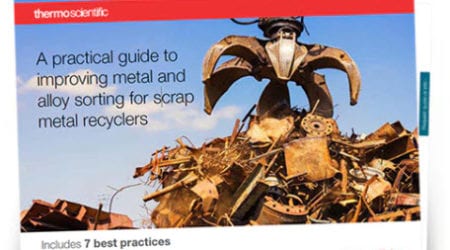 The holiday season is a time of gift-giving, and is especially important to those who are in the precious metals business — like jewelers, pawn shops, numismatics, and gold buyers — who do much of their year’s business in the last month of the year. So for those who are accustomed to helping customers pick out gifts for others, here are some gifts of tips to help optimize your operations. These include some previously published articles, but the information is still very timely.
The holiday season is a time of gift-giving, and is especially important to those who are in the precious metals business — like jewelers, pawn shops, numismatics, and gold buyers — who do much of their year’s business in the last month of the year. So for those who are accustomed to helping customers pick out gifts for others, here are some gifts of tips to help optimize your operations. These include some previously published articles, but the information is still very timely.
1. Beware of Gold Switching.
- You may think you have seen all the scams out there, but in case you haven’t, here’s an overview of a common one: a customer asks you to value a gold necklace. You test it, return the necklace to the person, chat with the person, and he then returns the necklace to you after declaring he will take the deal. You should then re-test the necklace and make sure it is the same one you originally valued.
- Read this article about a gold necklace switch scam…
2. How to Tell the Difference Between White Gold and Platinum
- White gold doesn’t occur naturally; it gets its silvery hue by being alloyed with white metals such as silver, nickel, manganese, platinum, or palladium. For a shiny finish, white gold is usually coated in rhodium plating that must be replaced periodically to prevent the white gold from reverting back to yellow. Platinum is also used to make jewelry and looks similar to white gold, but when compared side by side with white gold you can see that platinum has a more grayish color. Platinum doesn’t fade to yellow like white gold but the finish will dull, so like white gold, platinum jewelry may require some maintenance to keep it shiny.
3. Check It All or You Could Be Buying Some Fakes
- A pawn shop owner was fooled by acids and magnets when buying a gold bead necklace from a customer. It turns out that some beads were real and some were not.
4. You Cannot Tell a Real Coin From Its Cover
- A pawnbroker discovered after he purchased some “expensive” coins that many different counterfeit PCGS and NCG slabs (encapsulated coins) – with varying years and conditions — are still being sold on auction websites.The buyer read the Sealed Professional Coin Grading Services (PCGS) holders and the pieces had holograms, they weighed properly, and their numbers matched the PCGS website. Even scanning the bar code gave the correct number.” It was only when he took the coins to a friend who used a a portable XRF precious metals analyzer did he realize they were counterfeit, and made of lead and nickel instead of silver.
5. You Cannot Tell a Real Krugerrand From Its Color
- Several California pawn shops were suspicious of some Krugerrands that customers were bringing in. Although appearing of decent quality, some pieces had coloring that wasn’t quite right. Some thought the measurements were correct, but the details were not. One person brought in several Krugerrands, some of which were real while others were not. If the pawnbroker didn’t analyze each of them, he could have lost half the money he would have paid for them. This issue is of even greater concern now that Krugerrands are available in silver and platinum as well as gold.
6. Remember that Silver Made from Recycled Metals May Have Contaminants
- When one high-end jewelry manufacturer started using recycled silver (99.99%), they began to have quality problems that they didn’t have when using non-recycled silver of the same purity. Depending on the origin of the recycled silver, various contaminants may be unknowingly introduced into the melt, thus affecting not only the properties of the melt itself (such as its melting temperature) and the solidification process, but also the properties of the end-product, the jewelry item. Unfortunately electronics and films are possible origins of the recycled silver; in such cases one is likely to encounter elements such as indium (In), antimony (Sb), gallium (Ga), lead (Pb), tin (Sn), aluminum (Al), copper (Cu), cadmium (Cd), and others. Besides the fact that some of these elements are considered toxic, they are most likely going to influence the end-product’s properties, such as appearance, mechanical-strength, and chemical resistance, in an uncontrolled manner.
7. Why You Should NOT Use Acid to Test Precious Metals Jewelry
- Most acid kits contain materials to test 10k, 14k, 18k,and 22k gold. The acid rounds to the nearest testing solution; it can’t tell you if it’s 13K or 18.5K.You have to trust that your employees will know all this and interpret the results correctly. Also, certain types of stainless steel sometimes pass the stone test for 18 karat gold. These days, counterfeiting is getting harder to spot, and many shop owners have beene deceived by alloy chains that are fooling the acid test.
If you come across a piece jewelry and don’t know what it is, or if you want to verify the gold content or the carat amount, you can utilize x-ray fluorescence technology. XRF precious metals analyzers are fast, simple, nondestructive solutions for gold, precious metals, and alloy analysis. You can measure the content of all gold and precious metals, as well as determine the presence and concentration of other trace, alloying elements, and dangerous heavy elements, which could impact health and the valuation of your pieces — not what you want in a gift.






Leave a Reply